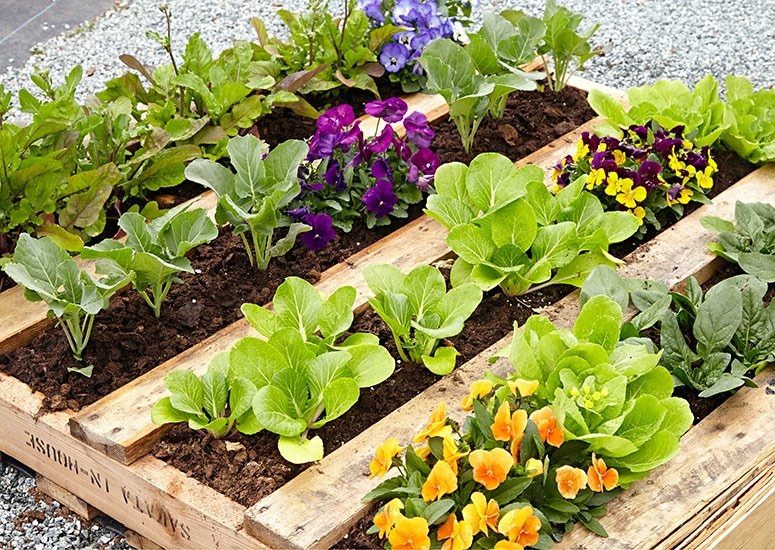As the gardening season approaches, enthusiasts and beginners alike eagerly prepare to nurture their plants and cultivate bountiful harvests. If you’re seeking an easy and budget-friendly way to set up raised beds for your garden, look no further than repurposing old pallets. With a few simple steps, you can transform discarded pallets into functional and attractive raised beds, ready to host your favorite plants. Let’s delve into this eco-friendly gardening solution.
1. Sourcing and Selecting Pallets:
Begin by sourcing sturdy wooden pallets from local businesses, warehouses, or recycling centers. Choose pallets in good condition without rot or damage. Standard-sized pallets (typically 40 x 48 inches) work well for creating raised beds.
2. Preparing the Pallets:
a. Disassembling (Optional): Use a pry bar and hammer to carefully disassemble the pallets, separating the individual wooden slats. This step allows for more flexibility in designing your raised beds.
b. Cleaning and Sanding: Remove any nails, staples, or debris from the pallets. Sand down rough edges and surfaces to prevent splinters and ensure a neat appearance.
3. Designing Your Raised Beds:
a. Single or Stacked Beds: Decide whether you want single-layer beds or stacked beds for added depth. Stacked beds can be created by securing pallet sides on top of each other.
b. Customizing Sizes: Cut pallets to desired lengths for rectangular or square beds. Consider creating L-shaped or U-shaped beds for space optimization and accessibility.
4. Assembling and Securing:
a. Attach Corners: Use screws or nails to secure pallet sides at corners, ensuring stability. For stacked beds, align and fasten pallet layers securely.
b. Reinforce if Needed: Depending on the pallet’s condition and intended use, add additional supports or braces to reinforce the structure, especially for taller raised beds.
5. Placement and Filling:
a. Choose a Suitable Location: Position your assembled raised beds in a sunny or partially shaded area with good drainage. Ensure easy access for watering, maintenance, and harvesting.
b. Fill with Soil Mix: Fill the raised beds with a nutrient-rich soil mix suitable for your plants. Consider adding compost, aged manure, or organic amendments to boost fertility.
6. Planting and Maintenance:
a. Select Plants: Choose vegetables, herbs, flowers, or fruits suited to your climate and garden goals. Follow recommended spacing and planting guidelines for optimal growth.
b. Watering and Care: Maintain consistent moisture levels in the raised beds, watering as needed based on plant requirements. Monitor for pests, weeds, and diseases, and take timely actions.
Benefits of Using Pallet Raised Beds:
- Cost-Effective: Repurposing pallets reduces costs associated with purchasing new materials for raised beds.
- Customizable and Versatile: Create raised beds of various sizes and shapes to fit your garden layout and preferences.
- Sustainable Gardening: Upcycling old pallets reduces waste and promotes eco-friendly gardening practices.
As you embark on a new gardening season, consider the potential of old pallets to elevate your garden’s design and functionality. With creativity and minimal effort, you can enjoy the benefits of raised beds while contributing to sustainable gardening practices. Get ready to sow seeds of success and watch your garden flourish in the seasons ahead!

